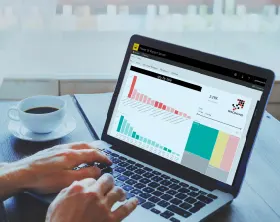Power Platform for Manufacturing Companies: Key Use Cases
Employee attendance tracking, compliance reporting, inspections and audits, expense management — a lot of operating workflows often remain manual (and inefficient) as IT teams are focused on more complex initiatives — and this is exactly the area where Power Platform can add the most value for manufacturers.
Overview of the Power Platform
Under the hood, Power Platform is a collection of no-code and low-code tools for various use cases.
- Power Apps is a platform for creating web and mobile applications for internal use, using out-of-the-box and custom-coded components.
- Power Automate, a successor of Microsoft Flow, provides tools for integrating and automating scenarios across Microsoft and third-party products.
- Power BI is a self-service business analytics app for creating custom reporting dashboards and data visualizations.
- Copilot Studio offers visual tools for creating virtual assistants and chatbots and can integrate ChatGPT into Power Platform.
Combined these tools make Power Platform a Swiss-army-knife type of solution for digitizing and automating a wide range of business processes in the manufacturing industry (and beyond it!).
The Benefits of Power Platform for Manufacturing
Power Platform slots perfectly with Microsoft products, from Teams to Dynamics 365 modules. In the words of Satya Nadella:
With Power Apps, manufacturers can:
- streamline process execution,
- remove manual steps,
- enable better data flows between apps,
- and avoid app switching.
You can select and package product features into a custom interface to support your business case.
For example, provide inspectors with a checklist-style audit app for data collection and processing, instead of inputting data from their mobile device into Dynamics 365 Field Service.
Power Platform also gives access to 350+ data sources, allowing you to synchronize multiple systems and prevent screen switching. Using a companion Power App, a Sales Rep can review customer information from Dynamics 365 on the go and inventory insights from SAP or another ERP to introduce clients to the best offers.
With Power Apps, you can effectively distribute data from more complex business systems (like SAP) using a more user-friendly interface (an intuitive mobile app). You can also introduce workflow automation between complex business systems using pre-made connectors to extend the systems’ functionality. That’s a more cost-effective option than purchasing yet another business tool.
Power Platform reduces app development costs by 74% on average, compared to full-code development. Manufacturers can automate a wider range of business processes to support their workforce using low-code tools.
7 Power Platform Use Cases for Manufacturing
Toyota, IKEA, P&G among other industry leaders are using Power Platform to streamline workflows, improve productivity, and gain operating agility.
To demonstrate the Power Platform's versatility, our team has gathered our favorite industry use cases.
Downtime Management App
Costly planned downtime is inevitable at manufacturing facilities due to regular equipment maintenance and reconfiguration of production floor layouts for new product lines. Effective coordination is necessary to minimize losses during planned changeovers.
A low-code app can help facility operators streamline equipment maintenance and changeover planning and execution. With it, employees can file, review, approve, and plan maintenance requests for different asset types, while providing a single view of planned downtime. It can also include capacity planning features, like adjusting employee shifts and re-assigning staff during maintenance events.
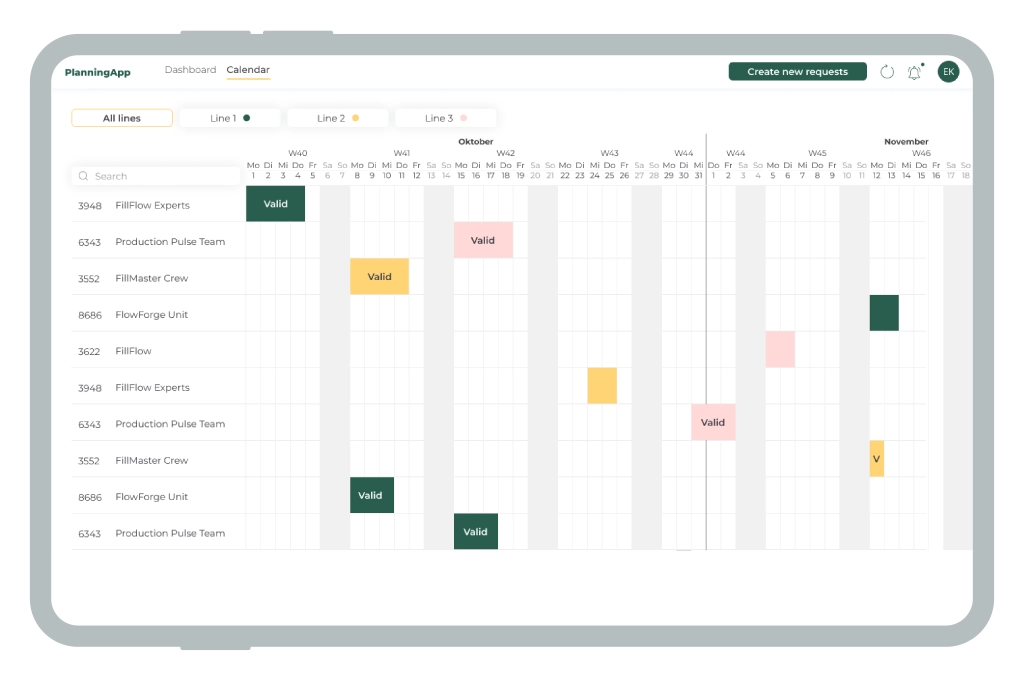
In terms of maintenance, automation can expedite spare parts ordering, schedule inspection coordination, and field servicing for faster turnaround. Combined with predictive analytics, it can improve asset servicing by suggesting just-in-time schedules, reducing sudden equipment failure.
Fortune Global 500 manufacturers lose over 3.3 million hours to equipment failure. Automatic anomaly detection systems, powered by predictive analytics, can substantially reduce operational and monetary losses.
P&G, for example, uses Azure IoT Hub and IoT Edge to collect operational data (production runs, downtime, changeovers) for process efficiency and sustainability. As part of its process optimization efforts, the team uses machine learning models to identify energy efficiency and equipment maintenance opportunities. Operational insights are disseminated across teams using Power Apps.
Audit and Inspection App
Manufacturers must meet various regulatory compliance requirements for product quality, occupational safety, and environmental factors. Compliance is typically demonstrated through inspection reports. On average, US manufacturers spend over 2,000 hours on federal regulatory compliance annually, with 17% spending over 10,000 hours, a NAM survey found.
One Power App can replace multiple checklists, paper forms, and custom questionnaire forms your compliance teams need to circulate. An inspection management app can contain standardized audit questionnaires and survey templates, as well as tools for creating custom options.
With a digital app, you don’t have to worry about incomplete, duplicate, or lost files, or errors in entries. Collected data can be automatically validated across the selected security, quality management, and sustainability standards and visualized on a Power BI dashboard.
By integrating your app with Microsoft Dynamics 365 you can schedule follow-up actions, improve inventory management, and optimize asset servicing schedules. For instance, if an audit finds an issue with equipment maintenance, you can automatically track the availability of spare parts, place an order, and assign a field engineer.
Infopulse has recently created a low-code inspection app for the European state utility company to streamline health, safety, quality, and environment compliance. Field inspectors can access inspection checklists (even offline) to perform audits and collect data, including photos and extra comments. The app can automatically generate a draft report using standardized templates.
With a custom inspection app, field engineers can capture and generate draft reports and complete them from their device, and then digitally sign them. All data is securely synchronized across connected systems, reducing the steps in the report submission workflow.
Employee Attendance Tracking App
Power Apps in manufacturing can be used for employee attendance tracking. Production floor workers often forget to log in or out, which affects workplace analytics and compliance reporting. No one wants to explain to the regulator that Eleanor isn’t forced to do 18-hour shifts for 5 days in a row but constantly forgets to terminate her active session on a forklift.
With Power Apps, you can create an employee time management app that tracks hours worked per shift, on assigned assembly lines, or at specific equipment. By integrating with the facility’s access control systems, employee attendance data can be logged automatically. A robotic process automation (RPA) algorithm can organize these entries into timesheets and forward the data to the HR department.
If you have connected equipment, you can configure the app to track its usage for better asset management and to avoid scheduling conflicts. For example, you can prevent scenarios with more operators than available spot-welding machines. A web interface can help managers plan shifts in line with labor regulations.
Customer Service Apps
Power Platform can streamline customer service tasks like product serving, warranty management, and direct sales. With Power Pages, you can create self-service portals for support inquiries, warranty registrations, servicing requests, or customer appointments.
IKEA’s Kitchen department used spreadsheets to track customer appointments, projects, and customer journey. The B2B sales team also used Excel to track individual and aggregated kitchen sales. This resulted in a disjointed CX, deterring buyers from purchasing kitchens at IKEA.
IKEA replaced these ad hoc solutions with a unified Sales Tool, based on the Power Platform. The new system features four apps:
- Kitchen App for in-store customer appointments, resources, and bookings.
- Co-Worker App provides comprehensive product details and facilitates revenue reporting.
- B2B App, connected to Dynamics 365 Sales for managing B2B sales pipeline and consolidating customer data.
- Customer support center for booking, re-booking, or canceling appointments on behalf of customers.
By using Power Platform, IKEA created a unified system for the kitchen sales team, eliminated manual steps in resource planning, consolidated customer data for better relationship management, and gained insights for forecasting and optimizing revenues.
Power Apps has a native integration with Azure OpenAI — a new Microsoft service, offering access to foundation models like GPT. With Azure OpenAI, teams can re-train large language models on corporate data to create more helpful customer support chatbots and sales assistants for your workforce.
Request Management App
A low-code app can replace sporadic emails for procurement. You can create a standard in-app flow for spare parts, personal protective equipment (PPE) restocks, extra equipment purchases, and other replenishment operations.
Employees can submit a request through a standardized form, and the app validates entries against corporate policies before routing the request to the supervisor for approval. Approved requests enter the procurement queue and are prioritized based on urgency levels, and then assigned to a procurement manager.
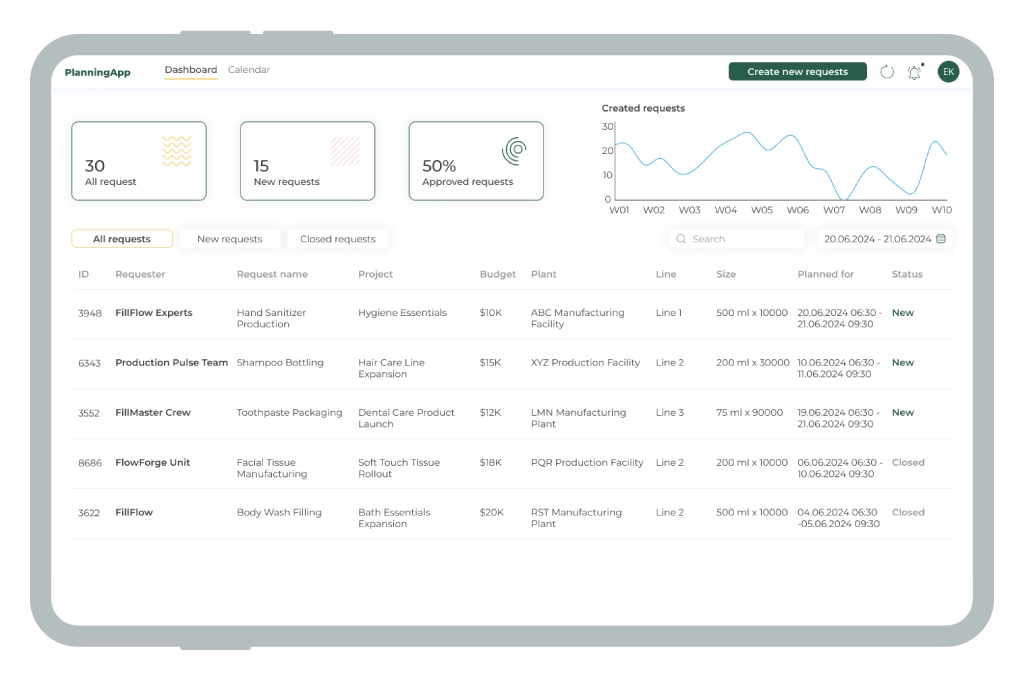
With this setup, managers stay in the loop on fulfilment statuses and expected delivery terms, while procurement teams can prioritize tasks.
You can streamline complex workflows, like new equipment installation, by creating an interface for coordinating tasks like site preparation, permit requests, inspection, floor rearrangement, delivery, and configuration.
Likewise, you can create solutions for submitting maintenance requests. Toyota created a simple facility management app on Power Platform to report detected issues (e.g., broken equipment). Employees have to scan a location-identifying QR code using their phone and attach a photo. The formed request gets routed to a facility manager for evaluation and remediation.
Invoice Management
Another manual workflow worth streamlining with PowerApps is invoice management. Account reconciliation is labor-intensive, especially if teams have to manually validate incoming supplier invoices, employee expense reimbursement requests, and account payables.
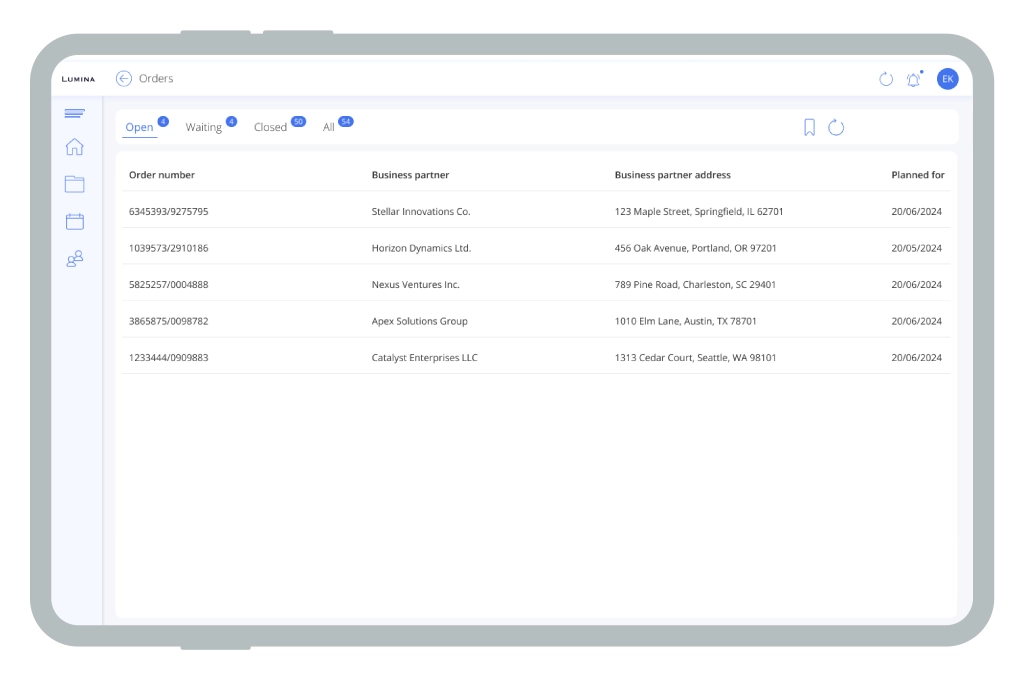
Power Platform streamlines invoice logging, review, approval, and payments, eliminating errors. Power Automate captures and logs data from submitted documents, then routes them for approval to managers.
As a result, manufacturers can:
- gain better cash flow insights,
- visualize payment data via a Power BI dashboard to monitor spending trends,
- detect deviations between forecasts and actual data,
- and get valuable financial insights.
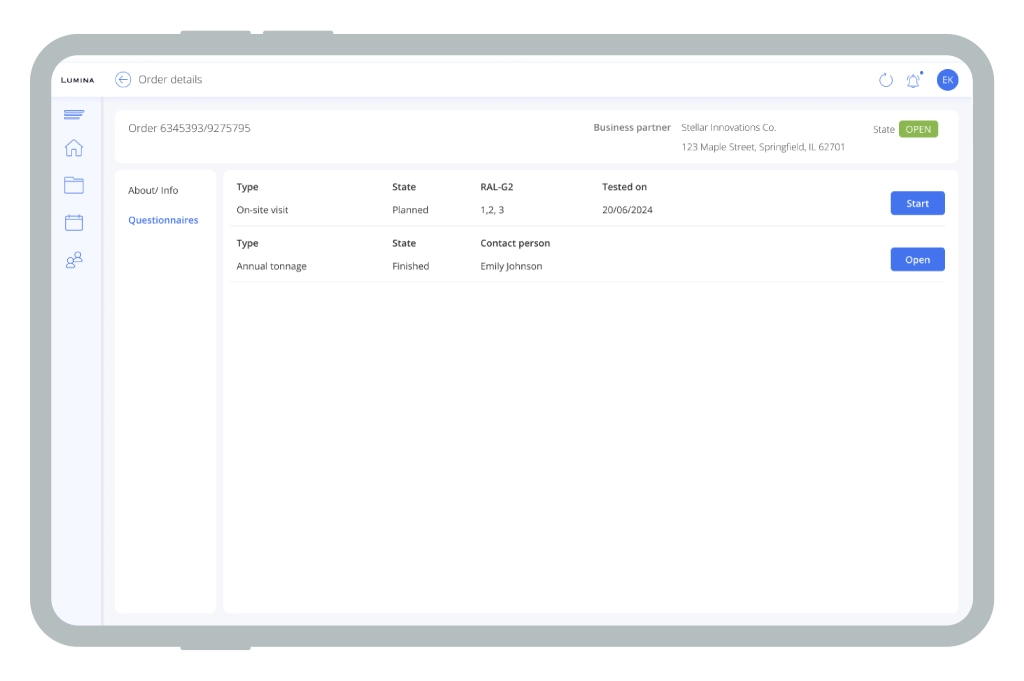
Document Management App with OCR
Canvas apps in Power Apps recently got a native text recognizer component, powered by optical character recognition (OCR). It extracts text from user-uploaded images or photos using an underlying OCR model, enabling various document management use cases:
- Faster invoice and expense reimbursement request processing through automatic data capture.
- Contract management through automatic document scans for key details and data uploads to a connected database or CRM system.
- Faster employee or contractor onboarding with automatic identity document or professional licenses data captures and verifications.
The app can be also configured to streamline inspection management and compliance tasks.
Conclusions
Power Platform helps manufacturing companies expose, customize, and re-package features from complex business software into a more convenient purpose-built solution. Whether your workforce is frustrated by manual data entry, lack of visibility into task statuses, or inability to access data they need on the go, with Power Platform you can fulfill these needs at a third of the cost of traditional app development.
![Power Platform for Manufacturing [MB]](https://www.infopulse.com/uploads/media/banner-1920x528-power-platform-for-manufacturing-companies-key-use-cases.webp)



![Power Apps Licensing Guide [thumbnail]](/uploads/media/thumbnail-280x222-power-apps-licensing-guide.webp)
![Generative AI and Power BI [thumbnail]](/uploads/media/thumbnail-280x222-generative-AI-and-Power-BI-a-powerful.webp)
![Digital Twins and AI in Manufacturing [Thumbnail]](/uploads/media/thumbnail-280x222-digital-twins-and-ai-in-manufacturing-benefits-and-opportunities.webp)
![ServiceNow for Manufacturing [Thumbnail]](/uploads/media/thumbnail-280x222-seven-ways-servicenow-drives-digital-transformation-in-manufacturing.webp)
![Manufacturing Trends 2024 [Thumbnail]](/uploads/media/thumbnail-280x222-manufacturing-trends-that-will-shake-the-world-in-2024.webp)

![Data Modelling Power BI [thumbnail]](/uploads/media/thumbnail-280x222-data-modelling-in-power-bi.webp)
![Power BI Plan [thumbnail]](/uploads/media/thumbnail-280x222-a-step-by-step-power-bi_.webp)
![Migration to Power BI [thumbnail]](/uploads/media/thumbnail-280x222-a-guide-to-power-bi-igration-5-stages-to-follow.webp)
![Extended Reality for Manufacturing [thumbnail]](/uploads/media/the-place-of-extended-reality-280x222.webp)
